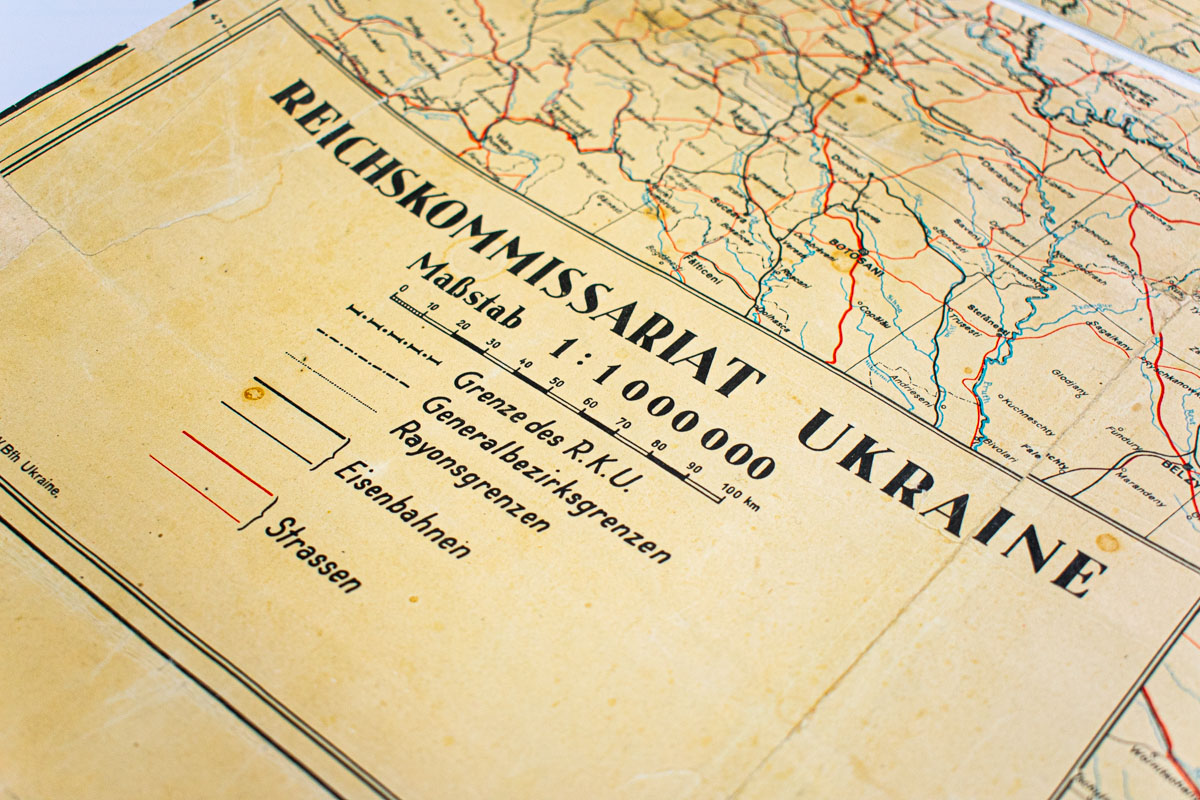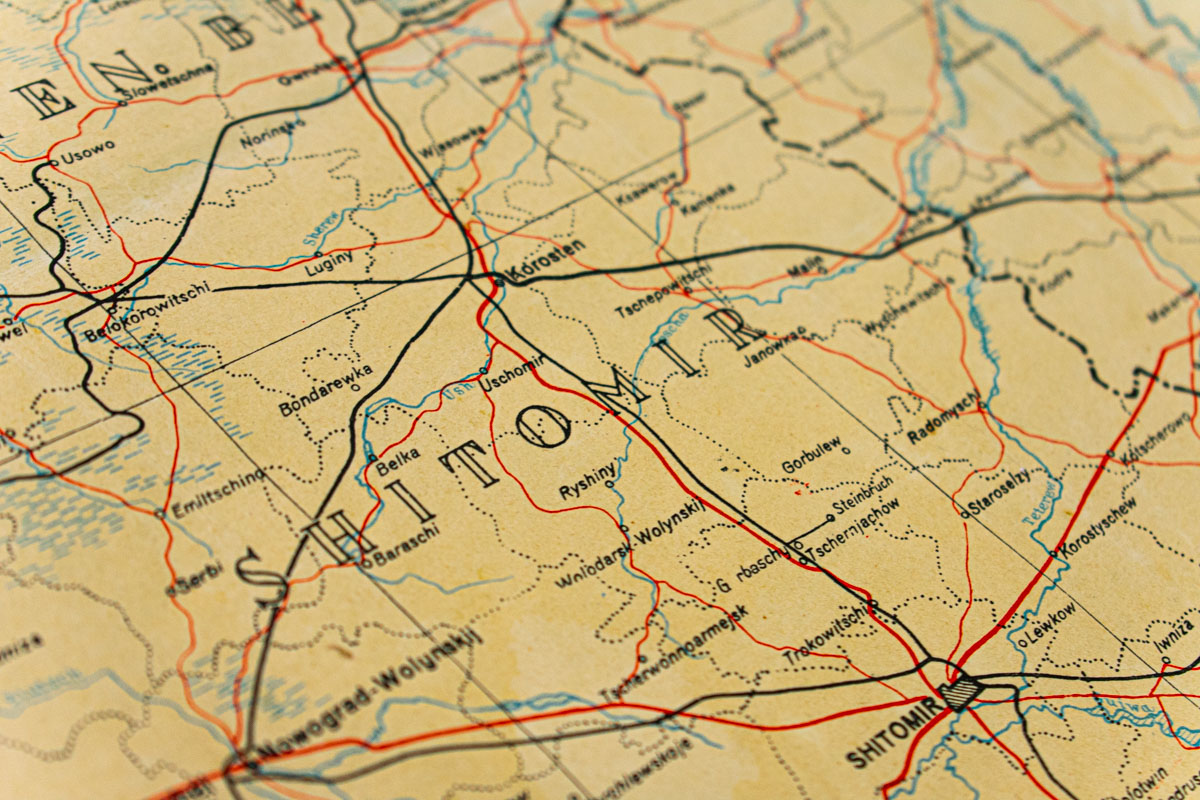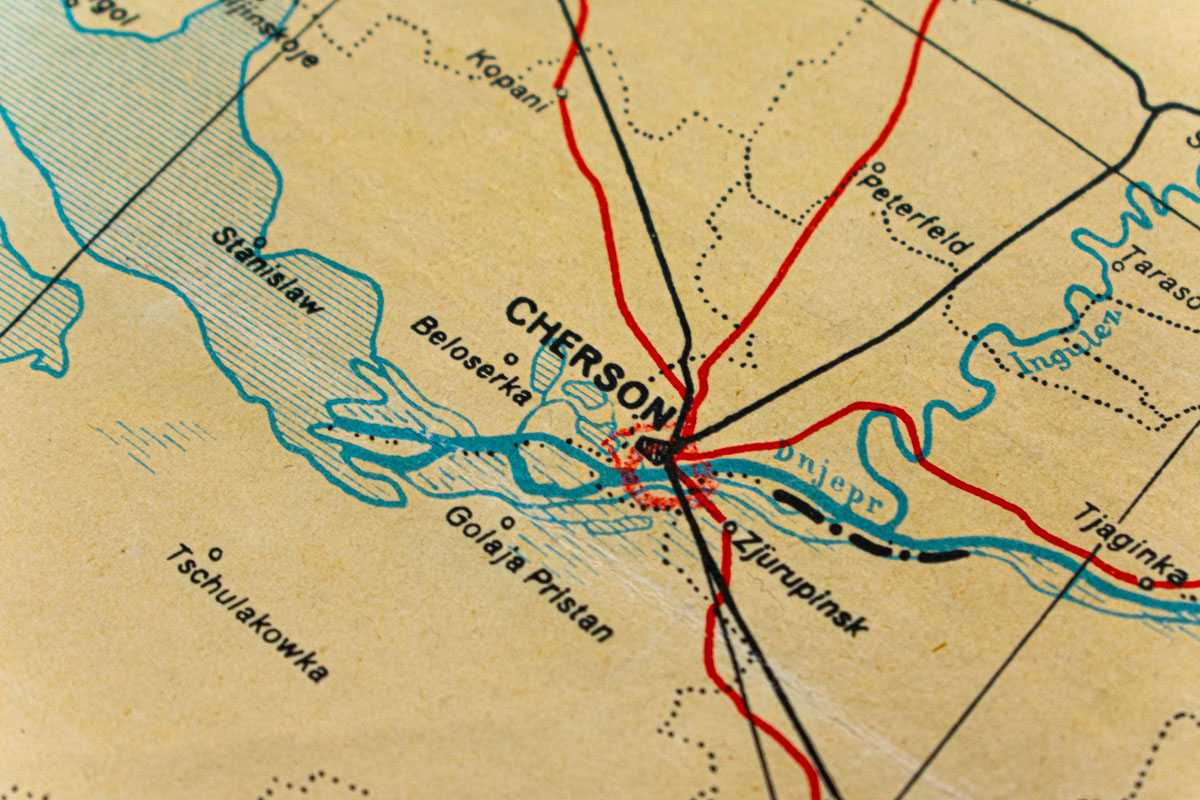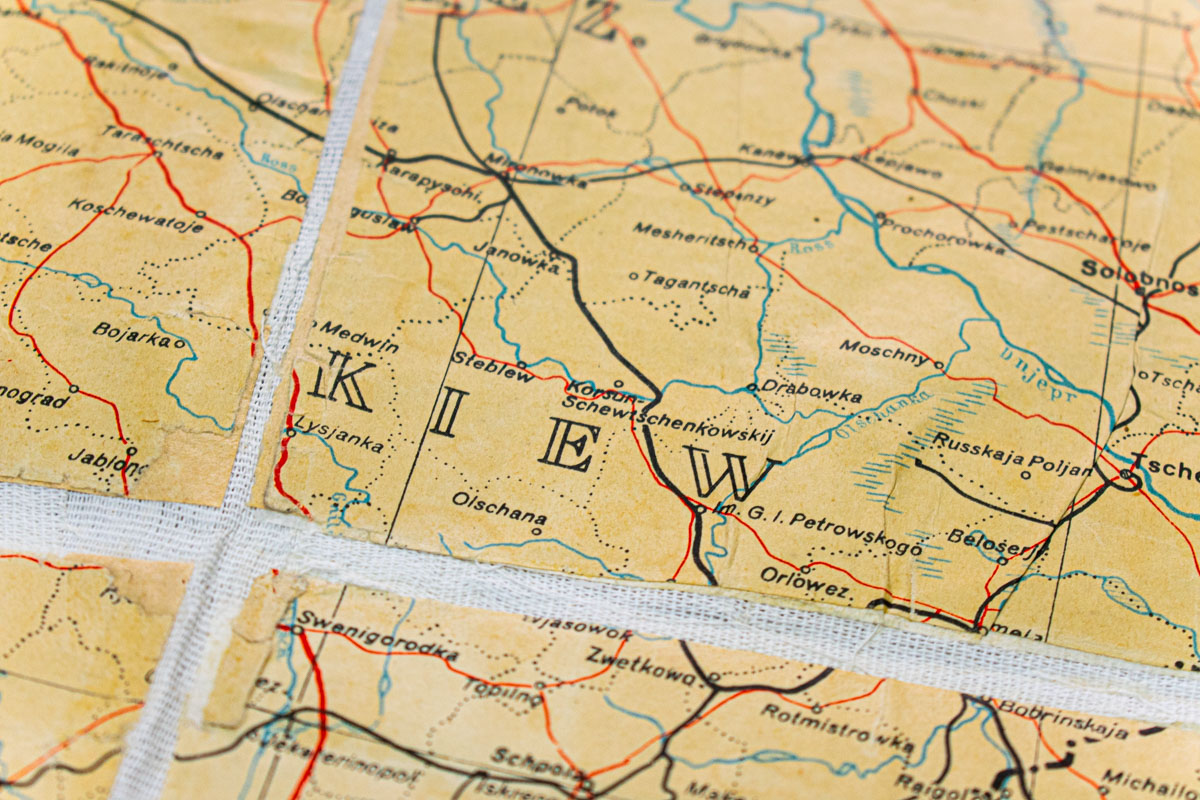The concept of the occupation of Ukrainian territories by the Nazis and their satellites first appeared in the exhibition in 1994. Among the artifacts with significant meaning, particular emphasis was placed on a printed map of the Reichskommissariat Ukraine from 1942, which had been recently added to the museum collection.
At that time, this extraordinary document was an important part of the broader narrative about the policies of the German occupation administration in the captured territories of the USSR, regulated by the "General Plan Ost" and the "Directives for the Economic Management of the Newly Occupied Eastern Regions" (a series of plans for the economic exploitation of the annexed Nazi “Eastern Territories,” united under the informal names of "Green Folder" by Hermann Göring or "Oldenburg Plan").
The map, discovered in 1943 in Kyiv by a Red Army soldier who participated in the battles, shows the division of the Dnieper Ukraine into six general districts: Volhynia and Podolia, Zhytomyr, Kyiv, Dnipropetrovsk, Mykolaiv, and Crimea (part of Taurida). The Reichskommissariat, with its capital in Rivne, existed administratively from August 20, 1941, to November 15, 1944, and as a territorial unit from September 1, 1941, until the end of April 1944.
In essence, Ukraine was transformed into a colony with the intensive forced exploitation of its natural and labor resources. It was later intended to become part of the German “Lebensraum im Osten” (living space in the East), with massive deportations and the destruction of the "racially undesirable" local population.
In reality, this museum item reveals much broader historical horizons. Both in the First and Second World Wars, these territories always became the epicenter of the largest battlefields in the Eastern European theater of both wars due to the so-called "Ukrainian question." As Timothy Snyder described them, the "bloody lands" hold immense geopolitical significance both in their region and globally. They have been and remain an object of desire for powerful natural, economic, and human resources and are a place where many cultures intersect. Therefore, throughout the 20th century, “the Ukrainian card” was used by both major and minor political players whenever the opportunity arose to serve their own interests. For the millions of people without a state, this resulted in numerous occupations and physical and spiritual destruction.
Today’s war, which Russia has once again unleashed, is primarily aimed at the complete destruction of Ukrainian statehood. However, the Kremlin’s objectives also include seizing all resources for further imperial expansion. Yet history is always multifaceted. Despite everything, the Ukrainian people, who seemed securely bound by the chains of tyranny or scattered around the world, have gone through their Golgotha, risen, and been reborn in their freedom.




